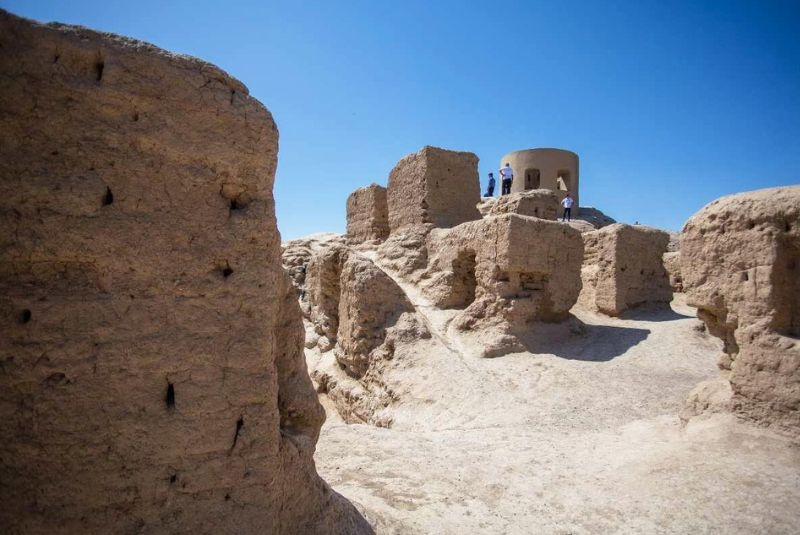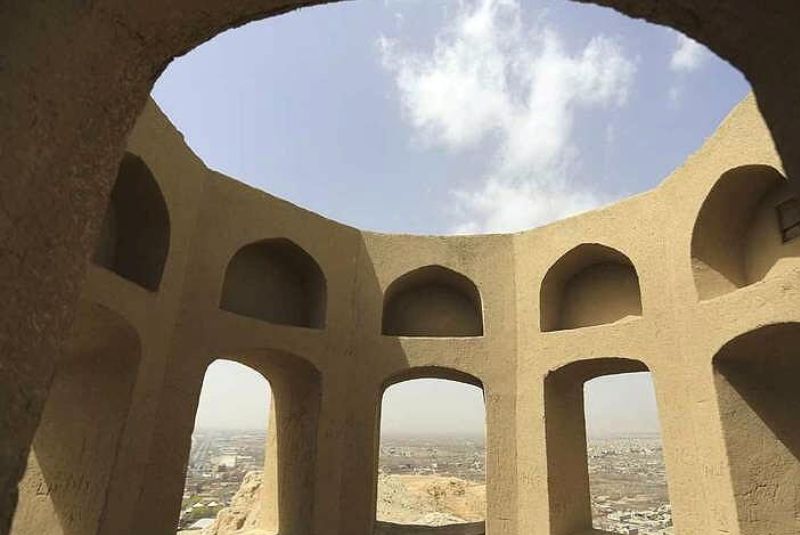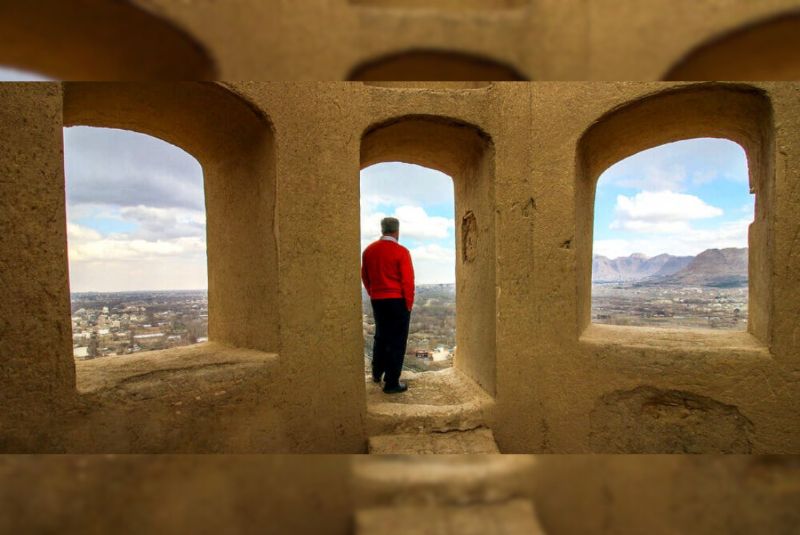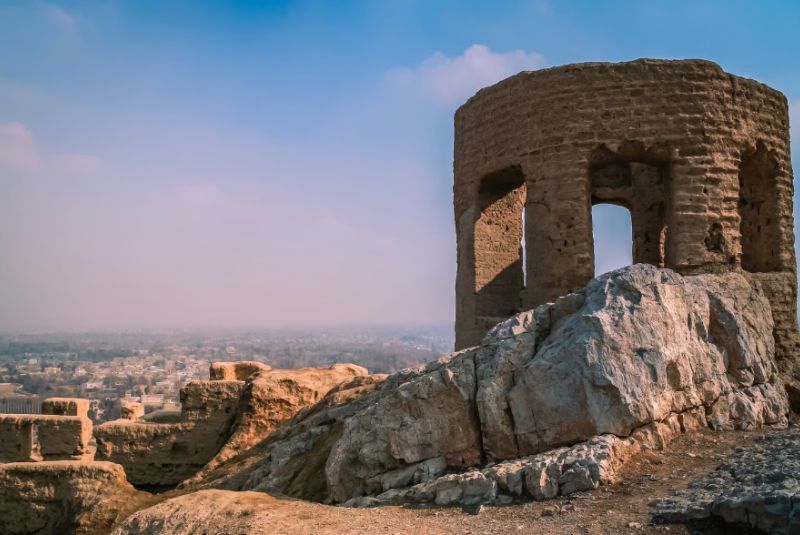Fire Temple of Isfahan | Atashgah-e Isfahan
The Fire Temple of Isfahan is an ancient relic from the Sassanid period that offers visitors a blend of history, spirituality, and stunning natural views.
Originally known as Mehrbin Fortress, this site was one of the seven great fire temples of the era. Today, its ruins reflect a once-magnificent structure where Zoroastrian priests tended to an eternal flame. A visit to this temple rewards you not only with a glimpse into ancient Persia but also with breathtaking panoramic views of the surrounding fields and gardens of Isfahan.
Fire Temple of Isfahan Historical Background

The Fire Temple of Isfahan (or Atashgah-e Isfahan) originally served as a fortress named Mehrbin, also known as Marbin. Constructed on the peak of Atashgah Mountain, it was part of the defensive structure of the ancient Marbin district. Its strategic location provided a vantage point over the surrounding plains, ensuring control over the region. The fortress not only offered protection but also held cultural significance, playing a role in the ancient Zoroastrian belief system before its transformation into a fire temple.
During the Sassanid period, the fortress was converted into a fire temple, an important religious site for Zoroastrians. The temple housed an eternal fire, symbolizing purity and the presence of divine light, which was tended to by Zoroastrian priests. Its location on the mountain gave it spiritual significance, and it became a center for worship, aligning with the Zoroastrian tradition of building fire temples in high, remote places to connect with nature and the heavens.
The Isfahan Fire Temple was considered one of the seven major fire temples of the Sassanid Empire, which underscores its importance in religious and cultural contexts. These temples were vital in preserving the sacred fire, which was believed to protect the empire and its people. As a major religious center, it not only attracted worshippers from nearby regions but also contributed to the socio-political strength of the Sassanid dynasty. Its significance remained prominent even as the empire evolved.
Fire Temple of Isfahan Architecture

The Fire Temple of Isfahan showcases remarkable ancient architecture typical of Sassanid-era structures. Built primarily from raw brick, clay mortar, lime, and reed stalks, the temple exudes a sense of resilience and durability. Its defensive fortress-like design was strategic, with thick walls and towering corners that once made it nearly impenetrable. The circular octagonal chamber at the top is believed to have housed the eternal fire, and its eight windows allowed the sacred flame to be visible from the surrounding area.

Although much of the original structure has deteriorated, traces of five floors are still visible today. The remaining foundations suggest a tall, multi-story building supported by strong columns. These columns, running from the base to the top chamber, indicate the scale and grandeur of the original structure. Additional remnants include staircases carved into the mountain and parts of walls that once supported a large rotating dome. These architectural features provide a glimpse into the fire temple’s grand history and significance.
Cultural Studies and Research

The first detailed study of the Fire Temple of Isfahan was conducted by French archaeologist André Godard in 1938. He documented the structure’s historical significance and architecture, contributing to a deeper understanding of its origins. Maxime Siroux later expanded upon Godard’s work in 1960 by creating the first architectural plan of the temple, solidifying its importance in Iranian history. Their research, published in various Iranology journals, helped preserve the cultural value of this ancient site.
In 1974 (1353 in the Iranian calendar), the Fire Temple underwent significant renovations under the Pahlavi dynasty, as evidenced by the dates etched into the northern section of the building. These efforts aimed to restore the historical integrity of the structure, addressing years of damage caused by natural decay and looting. Although not fully restored, these renovations helped maintain the Fire Temple’s cultural and architectural heritage for future generations.
Fire Temple of Isfahan Visiting Tips

Best times to visit:
Spring (April and May) is ideal due to mild weather.
Avoid hot summers or cold autumn and winter days.
Climbing advice:
The climb up Atashgah Mountain can be challenging; wear comfortable shoes.
Take breaks to enjoy panoramic views of Isfahan and surrounding fields.
Visiting hours and tickets:
Open from 9 am to 5 pm.
A ticket is required for entry to the Fire Temple, but the adjacent park is open 24/7 and free to enter.
Fire Temple of Isfahan Location and Access

The Fire Temple of Isfahan is located atop Atashgah Mountain, approximately eight kilometers west of the city. Perched at an elevation of 100 meters, the site offers a stunning vantage point, providing panoramic views of Isfahan’s urban landscape, fields, and surrounding greenery. This remote location adds to the temple’s historical significance, representing the ancient Zoroastrian tradition of situating religious sites in high, peaceful places close to nature.
Reaching the Isfahan Fire Temple involves a scenic journey westward from the city:
By Car or Taxi: Take Kharrazi Highway or Jihad Street toward Atashgah Street, leading directly to the base of the mountain.
Climb: After arriving, visitors should prepare for a hike up the mountain. Though the climb can be challenging, the breathtaking views of the fields, gardens, and Isfahan cityscape from the top make the effort worthwhile.
Finally!
The Fire Temple of Isfahan stands as a remarkable relic of ancient Persian history, embodying the cultural and religious significance of the Sassanid era. Its transformation from the Mehrbin Fortress into one of the seven great fire temples highlights its importance to Zoroastrianism. The breathtaking views from its location on Atashgah Mountain, combined with its unique architecture, make it a must-see destination for history enthusiasts and adventurers alike. Whether visiting for its historical depth or stunning panoramas, the temple offers a memorable glimpse into Iran's rich cultural heritage.
Share your story!
Comment below and let us know about your Experience.
Your story inspires others!


Comment
Leave a Comment